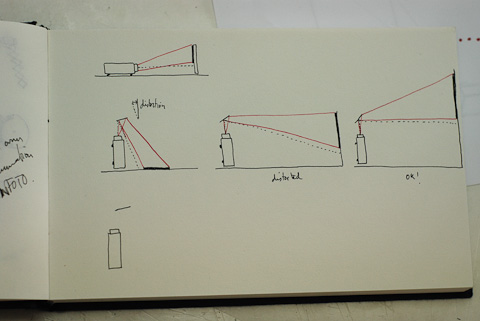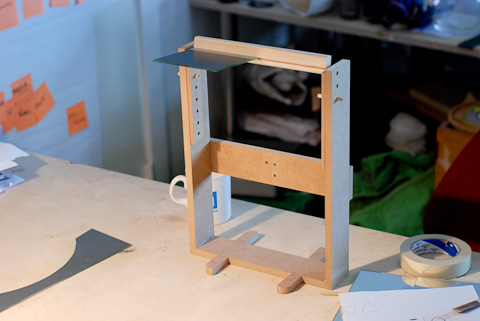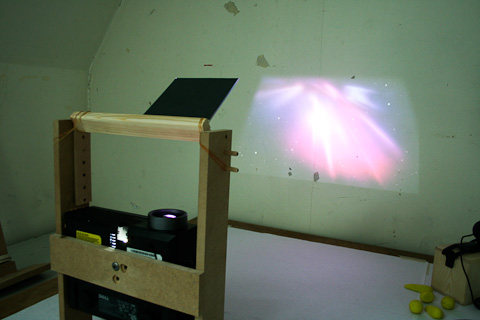Projectors and mirrors
Two weeks ago I made some experiments test some technical aspects and possibilities for the setup of the stop motion animation kit. Still to decide if it will be a kit for schools, a toy for home, an application for iPhone/iPad or a game for PlayStation, I wanted to understand a bit more about these possibilities and the technique of stop motion itself.
I started testing the angle and distortion of the projector. Although for the final prototype a smaller projector might be better, I started testing with mid-sized and powerful one. Some days ago I tried a pico-projector in a shop and it’s not bright to show sharp shapes even on a dim-light room, and it needs a certain distance to show a frame of 50cm wide. And the more distance, the less brightness… The positive thing is that it doesn’t get hot at all, and you can embedded in a case or box.
Trying to achieve a compact setup (that can fit into a box) I considered to put the projector vertical and use a mirror to project the image to the table. I’ve learnt that the projectors have a projection line – while using mirrors, you need to keep this line getting perpendicular to the final surface of projection to avoid distortion. In the projector I’m using, the projection line is even outside the projection range:
I built a stand for the projection that allows to regulate the height and angle of the mirror.
This setup allows to project the tutorials for the children on the table, and with a small change on the angle of the mirror, to project the movie on a wall. The distortion on the table is quite high. Using the camera it’s possible to recognize the deformation of the image and correct it automatically (projecting a pattern, calculating the distortion and adding the conversion accordingly). This could be done with Processing with some mapping applications like Keystone or ProjectedQuads. The squared area after the correction would be pretty small though.
Probably this is not the best setup for testing the tutorials because the distortion, but gives an idea of the distances to the table and wall, angles for the mirror, and size of the working area.
Tags: finalproject, mirror, projector




